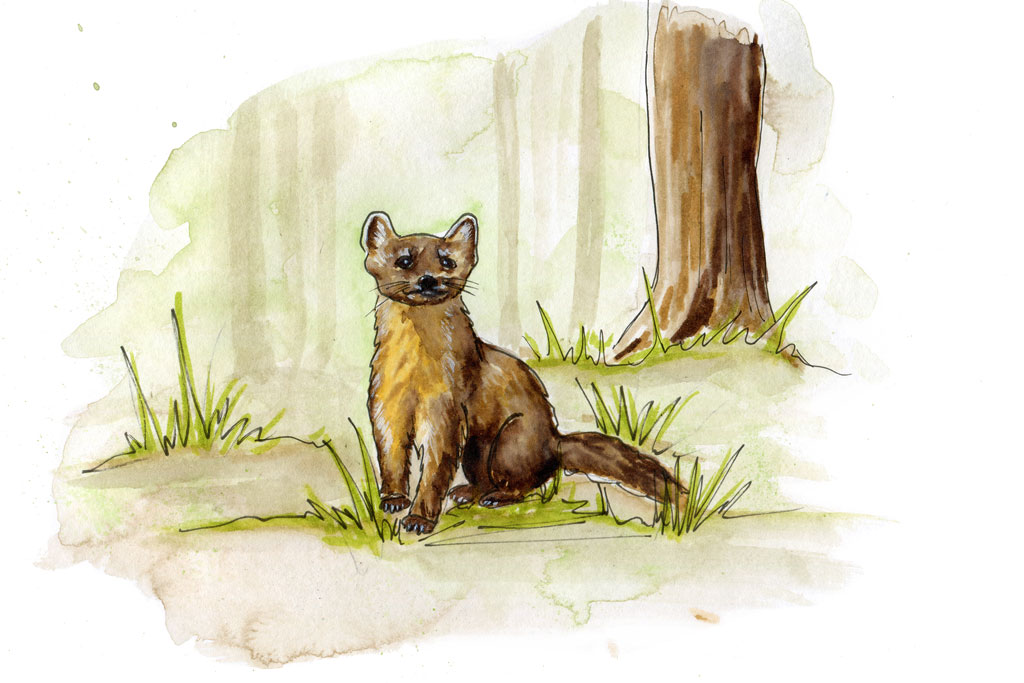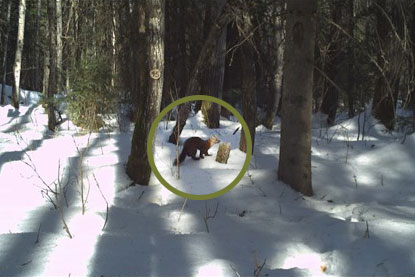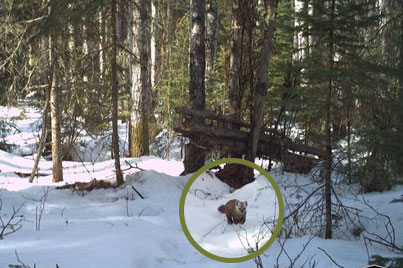
Martens are one of the most valuable animals still trapped in Alberta. The common description of American Martens (often called Pine Martens due to their similarity to their European cousins) says that they need mature forests to thrive. However, sightings of marten using other habitats has raised questions that are shared by both trappers and forest managers who use a common land base.
These two groups have joined forces for a new project. The Forest Resource Improvement Association of Alberta via Vanderwell Contractors (1971) is funding the work, and five local trappers in the Slave Lake region are collecting important new data to learn about annual habitat use by marten on their traplines. The management and handling of data from the project is being overseen by a local wildlife technician who also lives in the Slave Lake area and is familiar with the study area and the data collection methods being used. Environmental Research Program Lead Gord Stenhouse helped the trappers and Vanderwell staff design the study, get the field equipment, and he provides ongoing advice. As data accumulates, he will also assist in data analysis and report preparation.

“It’s really their project,” says Stenhouse. “It’s their research question, their data, their local knowledge – my role is just to support them.”
While martens do seem to prefer larger patches of mature conifer forests, studies of collared martens in BC show that they do use other types of habitat. There is very little research specific to Alberta’s boreal forest, especially outside the trapping season. This project will fill this research gap with 90 trail cameras along five trap lines within the Forest Management Area of Vanderwell. The trappers and Vanderwell are interested in learning what habitats and forest ages marten use in the non-trapping season, as well as how nearby forest harvesting can affect marten occupancy.
“The local trappers all have a connection to this area,” says Stenhouse, “They have a deep understanding of these animals and the local ecology.”

Beginning In December 2022, the trappers set up the cameras in forest stands ranging in age from 0 to >100 years. Despite their small size and quick movement, the high-resolution cameras have already made many marten detections, as well as sightings of 10 other species of interest including moose, deer, wolves, fishers, and lynx. The project will run for three years.
“Science doesn’t always do a good job of listening to the local knowledge that is out there,” says Stenhouse. “This project is exciting because not only are we bringing together foresters and trappers, but we’re enabling these groups to answer a question that matters to their communities.”






